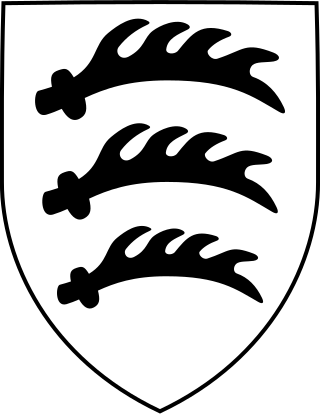Related Research Articles

The Panzergrenadier Division "Großdeutschland", also commonly referred to simply as Großdeutschland or Großdeutschland Division, was an elite combat unit of the German Army that fought on the Eastern Front in World War II.

The 1st SS Panzer Division Leibstandarte SS Adolf Hitler or SS Division Leibstandarte, abbreviated as LSSAH, began as Adolf Hitler's personal bodyguard unit, responsible for guarding the Führer's person, offices, and residences. Initially the size of a regiment, the LSSAH eventually grew into an elite division-sized unit during World War II.

The 1st Panzer-Division was an armoured division in the German Army during World War II.

The SS Division Hitlerjugend or 12th SS Panzer Division "Hitlerjugend" was a German armoured division of the Waffen-SS during World War II. The majority of its junior enlisted men were drawn from members of the Hitler Youth, while the senior NCOs and officers were from other Waffen-SS divisions. Most of the Division Enlisted Soldiers, were of Teenagers starting from the ages of 16 or even 15.

Panzergrenadier, abbreviated as PzG (WWII) or PzGren (modern), meaning "Armour"-ed fighting vehicle "Grenadier", is the German term for the military doctrine of mechanized infantry units in armoured forces who specialize in fighting from and in conjunction with infantry fighting vehicles (IFVs) – that is, armoured troop carriers designed to carry a mechanized squad of six to eight soldiers into, during and out of combat while providing direct fire support for those troops.

Hans–Ulrich Freiherr von Luck und Witten, usually shortened to Hans von Luck, was a German officer in the Wehrmacht of Nazi Germany during World War II. Von Luck served with the 7th Panzer Division and 21st Panzer Division. Von Luck is the author of the book Panzer Commander.

The 10th Panzer Division was an armoured division in the German Army, the Heer, during World War II, established in March 1939.

A Panzer division was one of the armored (tank) divisions in the army of Nazi Germany during World War II. Panzer divisions were the key element of German success in the blitzkrieg operations of the early years of World War II. Later the Waffen-SS formed its own panzer divisions, and the Luftwaffe fielded an elite panzer division: the Hermann Göring Division.
The Fallschirm-Panzer-Division 1. Hermann Göring was a German Luftwaffe armoured division. The HG saw action in France, North Africa, Sicily, Italy and on the Eastern Front during World War II. The division began as a battalion-sized police unit in 1933. Over time it grew into a regiment, brigade, division, and finally was combined with the Parachute-Panzergrenadier Division 2 Hermann Göring on 1 May 1944 to form a Panzer corps under the name Reichsmarschall. It surrendered to the Soviet Army near Dresden on 8 May 1945.

The Panzer-Lehr-Division was an elite German armoured division during World War II. It was formed in 1943 onwards from training and demonstration troops stationed in Germany, to provide additional armored strength for the anticipated Allied invasion of western Europe. On 4 April 1944, the division was officially designated as the 130th Panzer Division; however, it is usually referred to as the Lehr Division. It was the only Wehrmacht Panzer division to be fully equipped with tanks and with halftracks to transport its mechanized infantry. On several occasions it fought almost to destruction, in particular during Operation Cobra, and by the end of the war in Europe bore little resemblance to the unit that had originally been activated.

The 6th Panzer Division was an armoured division in the German Army, the Heer, during World War II, established in October 1939.

The 12th Panzer Division was an armoured division in the German Army, established in 1940.
The Panzerkorps Großdeutschland was a German panzer corps in the Wehrmacht which saw action on the Eastern Front in 1944/1945 during World War II.

The 17th SS Panzergrenadier Division "Götz von Berlichingen" was a German Waffen-SS division that saw action on the Western Front during World War II.

In military history, the German term Kampfgruppe can refer to a combat formation of any kind, but most usually to that employed by the Wehrmacht of Nazi Germany and its allies during World War II and, to a lesser extent, the German Empire in World War I.
The 7th Panzer Division was an armored formation of the German Army in World War II. It participated in the Battle of France, the invasion of the Soviet Union, the occupation of Vichy France, and on the Eastern Front until the end of the war. The 7th Panzer Division is also known by its nickname, Ghost Division.

The 14th Panzer Division was an armoured division in the German Army during World War II. It was created in 1940 by the conversion of the 4th Infantry Division.

The 25th Infantry Division was a military unit of the German Wehrmacht. It was later reclassified to 25th Motorized Infantry Division, and in June 1943 to the 25th Panzergrenadier Division.
The 113th Panzer Brigade was a tank formation of the German Army in World War II. As a tank formation, it was part of the Panzer Arm (Panzerwaffe).
The 101st Panzer Brigade was a Panzer Brigade that fought in World War II.
References
Books
- Jentz, Thomas (1996). Panzertruppen Vol. 2 The Complete Guide to the Creation & Combat Employment of Germany's Tank Force 1943-1945. Atglen, PA: Schiffer Publishing. ISBN 0-7643-0080-6.
- Mitcham, Samuel W. (2006). The Panzer Legions: A Guide to the German Army Tank Divisions of World War II and Their Commanders. Mechanicsburg, Pennsylvania: Stackpole Books. ISBN 0-811733-53-X.
- Ziemke, Earl F. (2002). Stalingrad to Berlin: The German Defeat in the East. Washington D.C.: Center of Military History, US Army. ISBN 9780160019623.
Websites
- Bruyns, Ruud. "Panzer Brigades in the West, 1944". Panzerworld. Retrieved September 26, 2015.
- "Basic Organization of Panzer/Panzergrenadier Brigade, 1944". Panzergrenadier. Retrieved September 26, 2015.